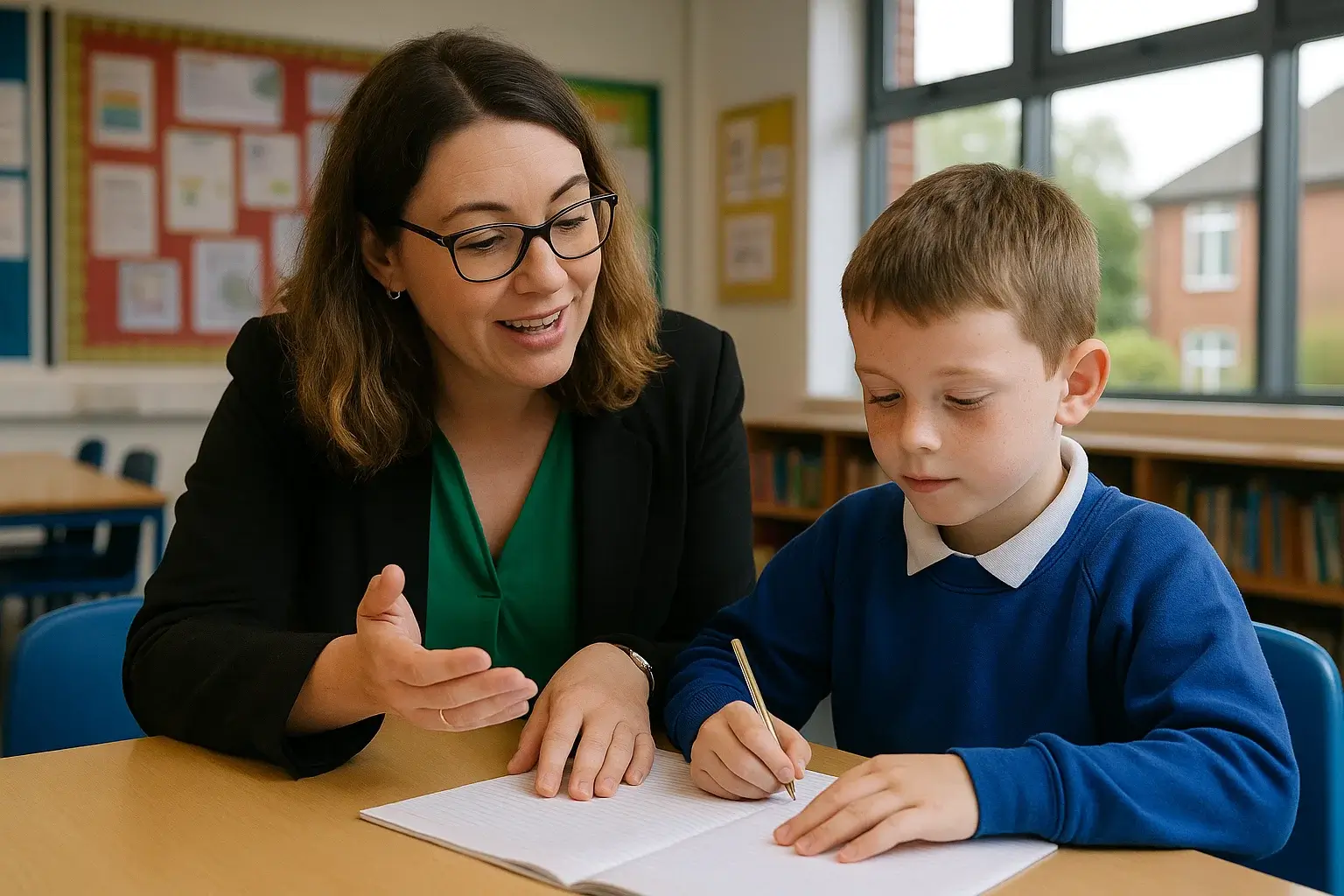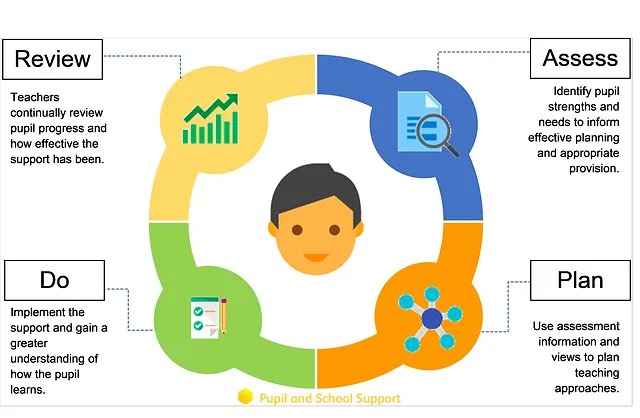SENCo's Role
Discover the pivotal role of SENCOs in fostering pupil progress and their strategies for addressing special educational needs effectively.


A Special Educational Needs Co-Ordinator (SENCo) sits at the heart of a school’s SEND policy, working alongside school leaders and the headteacher to ensure every pupil with special educational needs (SEN) or disabilities thrives. Whether you’re in an academy school, a free school, or a maintained setting, the SENCo role involves designing and managing support plans, overseeing EHC plans, and liaising with the local authority and local agencies to secure timely assessments and services.
In practice, a SENCo might split time between classroom-based interventions - co-teaching literacy groups or modelling differentiated lessons - and strategic tasks such as drafting the school’s SEN policy or reviewing annual reviews for pupils with EHC plans. They train teaching staff on inclusive approaches, champion adjustments from seating plans to exam arrangements, and coordinate referrals to speech and language therapists, educational psychologists, or occupational therapists. Across multi-academy trusts, an experienced SENCo may even support colleague coordinators in neighbouring schools, sharing best practice and ensuring consistent implementation of the SEND policy.
It’s a role loaded with responsibility - tracking progress data, allocating resources from the SEN budget, and reporting to governors - but equally rich in reward. You’ll see the impact of a well-crafted support plan when a child’s confidence soars or when barriers to learning finally fall away. If you’re passionate about equity, thrive on problem-solving, and want to shape a school’s approach to inclusion, exploring the SENCo role could be your next big step.
Key Points
A SENCo’s week is a blend of strategic planning, hands-on support, and collaborative problem-solving. Although they often start out as classroom teachers, taking on the SENCo role usually means stepping away from a full teaching timetable to focus entirely on the needs of pupils with SEND. Many SENCos bolster their expertise through specialist training - whether that’s an accredited postgraduate programme or courses from bodies like NASEN - so they can deliver tailored interventions and even train colleagues.
On any given day, you might find a SENCo designing whole-school policy one moment, then observing a pupil’s learning the next. They’ll meet with parents, psychologists, or therapists to share progress and arrange referrals. They’ll also coach teachers on adapting lesson plans and behaviour strategies, and they’ll manage a modest budget to ensure resources match each child’s needs. Behind the scenes, SENCos keep meticulous records, analyse performance data, and stay up to date with changing SEND legislation.
Below is a snapshot of the tasks that typically fill a SENCo’s week:
Key Points

All the SENCoS play a vital role in their schools, therefore, they need to have a leading status in the school. Some schools don't give enough status to their SENCo even though according to the registered pupil population with SEN, 20% of the total children in each school are likely to have some type of special educational need.
If the leadership team of a school lacks a SENCo, it can make the role of SENCo even more difficult. With status arrives the authority and capacity to bring change whenever needed. Therefore, it is less likely for SENCos to introduce any effective change in the school if they do not have a place in the school's leadership team.
Also, not having any SENCo in the leadership team may raise questions about the school’s belief in inclusion and it may reflect the status of SEN on the school's agenda.
Also, the SENCos must have sufficient time to effectively perform their duties. Their Code of Practice must clearly state that the SENCo needs to have ‘sufficient resources and time to perform their role'. It’s difficult to be precise how much time SENCos will be needing to perform their duties as every school has a different plan.
Each school has a different number of students with SEN. A SENCo may need more time than a single day each week to carry out the responsibilities effectively. Relieving this member of staff from classroom teaching duties can provide them with the time they require to support students needs.

The code of practice has identified four major areas of need for students with SEN:
An experienced and qualified teacher will need to attend professional development and work with commitment and honesty towards their SENCo status. A SENCo works in partnership with parents, teaching assistants and others to provide the best service possible for the children. A SENCo ensures that any provision or plans agreed for the children with SEN are effectively carried out by their education settings.

The most effective teachers who work with children and parents with SEN are well-informed about the provision of the individual child. The family must attend regular review meetings where both SENCo and the family can discuss the progress of the children with SEN. The following are some of the important qualities of a SENCo:
In both primary and secondary school settings, effective SENCoS advocate for children with SEN by understanding their needs and making sure that everyone in the school setting (especially those who work with children with SEN) know the best ways to support them. A SENCo's provision cannot be as good as it should be unless the SENCo works in close contact with the headteacher, who must identify and support the critical strategic leadership role of the SENCo. The school's action plan for SEN should not be an add-on or afterthought – it must be truly connected to the whole-school priorities.

As we have seen, Special Education Needs Coordinators (SENCOs) play a vital role in schools, ensuring that children with special needs receive appropriate support. However, they face several challenges:
These challenges highlight the multifaceted role of the disabilities coordinator in schools. Addressing them requires a comprehensive understanding of special education, collaboration with various stakeholders, and a commitment to continuous improvement in inclusion in school practices.
A Special Educational Needs Co-Ordinator (SENCo) sits at the heart of a school’s SEND policy, working alongside school leaders and the headteacher to ensure every pupil with special educational needs (SEN) or disabilities thrives. Whether you’re in an academy school, a free school, or a maintained setting, the SENCo role involves designing and managing support plans, overseeing EHC plans, and liaising with the local authority and local agencies to secure timely assessments and services.
In practice, a SENCo might split time between classroom-based interventions - co-teaching literacy groups or modelling differentiated lessons - and strategic tasks such as drafting the school’s SEN policy or reviewing annual reviews for pupils with EHC plans. They train teaching staff on inclusive approaches, champion adjustments from seating plans to exam arrangements, and coordinate referrals to speech and language therapists, educational psychologists, or occupational therapists. Across multi-academy trusts, an experienced SENCo may even support colleague coordinators in neighbouring schools, sharing best practice and ensuring consistent implementation of the SEND policy.
It’s a role loaded with responsibility - tracking progress data, allocating resources from the SEN budget, and reporting to governors - but equally rich in reward. You’ll see the impact of a well-crafted support plan when a child’s confidence soars or when barriers to learning finally fall away. If you’re passionate about equity, thrive on problem-solving, and want to shape a school’s approach to inclusion, exploring the SENCo role could be your next big step.
Key Points
A SENCo’s week is a blend of strategic planning, hands-on support, and collaborative problem-solving. Although they often start out as classroom teachers, taking on the SENCo role usually means stepping away from a full teaching timetable to focus entirely on the needs of pupils with SEND. Many SENCos bolster their expertise through specialist training - whether that’s an accredited postgraduate programme or courses from bodies like NASEN - so they can deliver tailored interventions and even train colleagues.
On any given day, you might find a SENCo designing whole-school policy one moment, then observing a pupil’s learning the next. They’ll meet with parents, psychologists, or therapists to share progress and arrange referrals. They’ll also coach teachers on adapting lesson plans and behaviour strategies, and they’ll manage a modest budget to ensure resources match each child’s needs. Behind the scenes, SENCos keep meticulous records, analyse performance data, and stay up to date with changing SEND legislation.
Below is a snapshot of the tasks that typically fill a SENCo’s week:
Key Points

All the SENCoS play a vital role in their schools, therefore, they need to have a leading status in the school. Some schools don't give enough status to their SENCo even though according to the registered pupil population with SEN, 20% of the total children in each school are likely to have some type of special educational need.
If the leadership team of a school lacks a SENCo, it can make the role of SENCo even more difficult. With status arrives the authority and capacity to bring change whenever needed. Therefore, it is less likely for SENCos to introduce any effective change in the school if they do not have a place in the school's leadership team.
Also, not having any SENCo in the leadership team may raise questions about the school’s belief in inclusion and it may reflect the status of SEN on the school's agenda.
Also, the SENCos must have sufficient time to effectively perform their duties. Their Code of Practice must clearly state that the SENCo needs to have ‘sufficient resources and time to perform their role'. It’s difficult to be precise how much time SENCos will be needing to perform their duties as every school has a different plan.
Each school has a different number of students with SEN. A SENCo may need more time than a single day each week to carry out the responsibilities effectively. Relieving this member of staff from classroom teaching duties can provide them with the time they require to support students needs.

The code of practice has identified four major areas of need for students with SEN:
An experienced and qualified teacher will need to attend professional development and work with commitment and honesty towards their SENCo status. A SENCo works in partnership with parents, teaching assistants and others to provide the best service possible for the children. A SENCo ensures that any provision or plans agreed for the children with SEN are effectively carried out by their education settings.

The most effective teachers who work with children and parents with SEN are well-informed about the provision of the individual child. The family must attend regular review meetings where both SENCo and the family can discuss the progress of the children with SEN. The following are some of the important qualities of a SENCo:
In both primary and secondary school settings, effective SENCoS advocate for children with SEN by understanding their needs and making sure that everyone in the school setting (especially those who work with children with SEN) know the best ways to support them. A SENCo's provision cannot be as good as it should be unless the SENCo works in close contact with the headteacher, who must identify and support the critical strategic leadership role of the SENCo. The school's action plan for SEN should not be an add-on or afterthought – it must be truly connected to the whole-school priorities.

As we have seen, Special Education Needs Coordinators (SENCOs) play a vital role in schools, ensuring that children with special needs receive appropriate support. However, they face several challenges:
These challenges highlight the multifaceted role of the disabilities coordinator in schools. Addressing them requires a comprehensive understanding of special education, collaboration with various stakeholders, and a commitment to continuous improvement in inclusion in school practices.